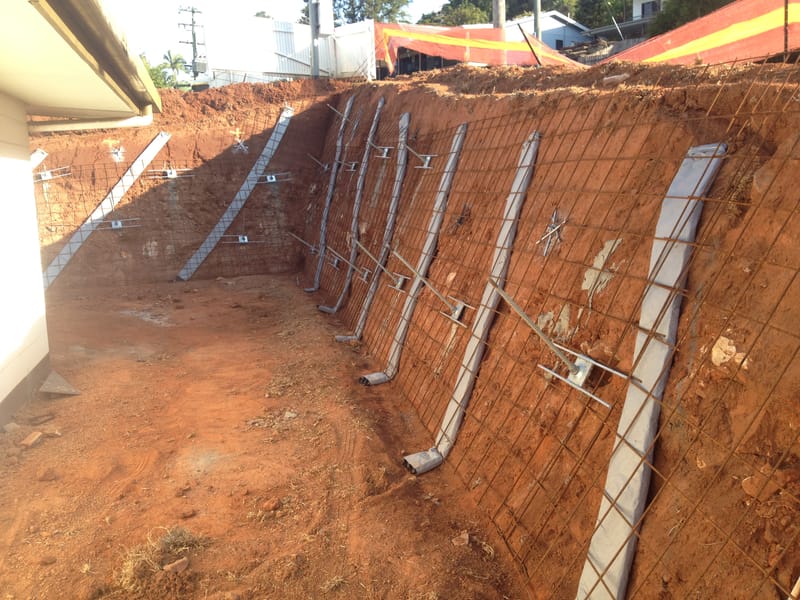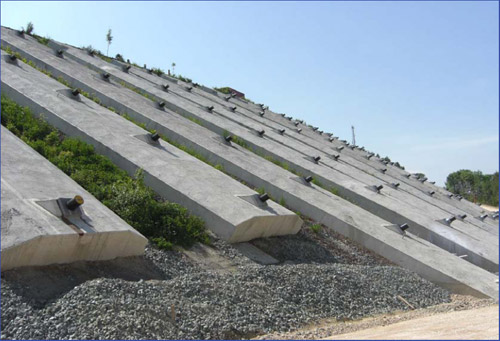Reliable Rock Anchors for Secure and Secure Foundations
In the world of civil design, the role of reliable rock supports can not be overstated, as they are pivotal in developing safe and stable structures across a variety of applications. Recognizing the different kinds of rock anchors, their details applications, and the ins and outs of setup and upkeep is necessary for enhancing their efficiency.
Sorts Of Rock Anchors

Easy anchors depend on the weight of the structure and the surrounding soil or rock to offer resistance. They are commonly used in applications where very little activity is anticipated. Energetic supports, on the various other hand, include the application of tension via a high-strength wire or rod, developing a pre-stressed condition in the anchor. This type is particularly beneficial in dynamic environments, such as landslide-prone areas.
Grouted supports are one more substantial classification, where a steel bar or cable television is inserted into a pierced opening, followed by a cementitious cement. As soon as cured, the cement bonds with the bordering rock, creating a durable anchoring system. Each type of rock anchor uses distinct advantages based upon the particular geological problems and structural needs, thus playing an essential duty in the overall stability and long life of constructed facilities.
Applications in Construction
Rock anchors play a pivotal duty in numerous building and construction applications, giving vital support and stability in diverse environments. These cutting-edge services are utilized in tasks ranging from large facilities advancements to smaller sized property structures. Among the main applications of rock anchors remains in the stabilization of inclines and maintaining walls, where they aid protect against dirt erosion and maintain architectural integrity.
In addition, rock supports are important in securing structures for bridges, passages, and skyscrapers, guaranteeing they can stand up to lateral pressures such as wind and seismic task. Their convenience permits for installment in tough geological conditions, making them ideal for jobs in mountainous or rocky surfaces.

Secret Selection Requirements
Choosing the suitable rock anchor for a particular application requires mindful factor to consider of a number of key requirements. The geological conditions of the site need to be thoroughly examined. Understanding rock kind, toughness, and security is necessary to make certain that the anchor will do effectively under tons conditions.

One more vital factor is the rust resistance of the support materials. In atmospheres revealed to wetness or chemicals, making use of corrosion-resistant products will extend the lifespan of the anchors and preserve architectural integrity gradually.
Additionally, the anchor's installment method ought to straighten with the task's requirements and constraints. Alleviate of installment, as well as the prospective influence on bordering frameworks, should be thought about.
Setup Strategies
Efficient installment strategies are critical for the effective efficiency of rock anchors. Appropriate installation makes sure that the anchors accomplish the preferred load-bearing ability and security within the geological conditions. The initial step in the setup process includes site assessment, where geological studies establish the rock kind, problem, and any type of prospective challenges.
Once the website is reviewed, the ideal exploration technique should be selected-- options consist of rotating drilling, diamond exploration, or percussion boring. The choice depends on rock solidity and ecological considerations. Accurate exploration depth and angle are important to make sure that the anchors straighten with architectural requirements and lots circulation.
After boring, the following stage includes cleaning the borehole to get rid of particles, which can jeopardize bond strength. Following this, the support is inserted, and if called for, a cement or resin is infused to enhance attachment. The healing time of these materials have to be stuck to, making sure that the anchors attain full toughness prior to any type of lots is used.
Upkeep and Evaluation
Proper maintenance and inspection of rock supports are vital to guarantee their long-term performance and integrity (Williams Anchors). Routine assessments assist identify any kind of prospective issues, such as rust, variation, or structural exhaustion that might endanger the stability of the anchoring system
Routine evaluations should be carried out at specified periods, considering ecological aspects and the specific application of the rock supports. Visual assessments should concentrate on the exposed sections of the supports, checking for indications of corrosion, cracks, or other anomalies. Visit This Link In addition, it is vital to evaluate the bordering geological problems to spot any type of changes in dirt or rock that may you can try these out influence support efficiency.
Sometimes, advanced strategies such as lots screening or non-destructive testing may be called for to identify the anchors' load-bearing capacity and overall health and wellness. Appropriate paperwork of examination searchings for, upkeep tasks, and any kind of fixings or substitutes performed is vital for ongoing evaluation and compliance with industry standards.
Conclusion
In conclusion, reputable rock supports play a critical role in ensuring secure and secure structures throughout different construction applications. By effectively moving lots and boosting stability against lateral pressures, these supports add substantially to the durability and stability of structures such as bridges, passages, and preserving wall surfaces. Strategic option, installation, and upkeep of rock anchors are vital for enhancing efficiency and securing public safety and security, inevitably highlighting their significance in modern design techniques.
Comments on “Explore the Full Series Of Williams Anchors for Superior Ground Stabilization”